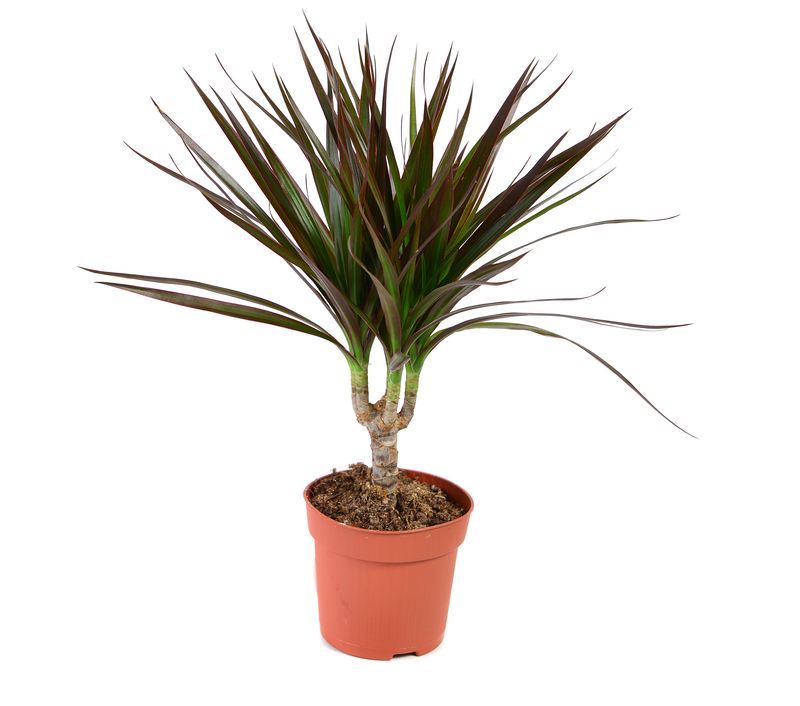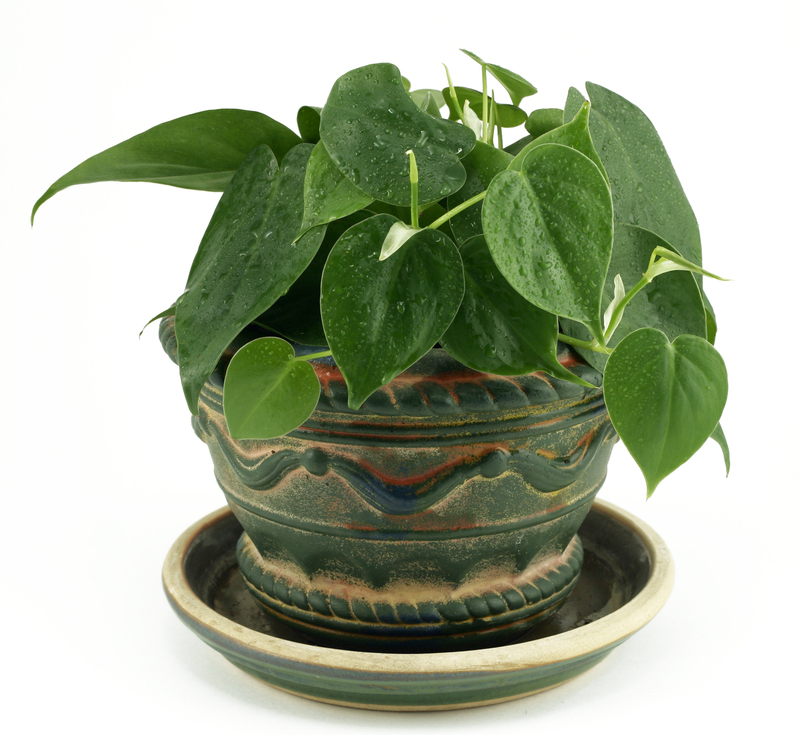An introduction to the art of container gardening
Posted on 07/06/2025
An Introduction to the Art of Container Gardening
Container gardening is a vibrant and modern way to bring the magic of nature into any space, regardless of its size. Whether you live in an apartment with a tiny balcony, a house with a sprawling deck, or simply wish to bring greenery indoors, container gardening offers an accessible path to beauty, relaxation, and even fresh produce. This comprehensive guide unpacks the essentials, benefits, and creativity involved in the art of container gardening, empowering you to start your own lush, portable oasis.
What is Container Gardening?
Container gardening refers to the practice of growing plants exclusively in containers such as pots, planters, tubs, or other vessels, rather than directly in the ground. This technique allows for immense versatility and creativity, as a wide variety of plants -- from decorative flowers and hardy succulents to tasty herbs and vegetables -- can thrive in containers with proper care.
Why Choose Container Gardening?
- Space Efficiency: Ideal for small patios, balconies, windowsills, and even sunny interiors, making greenery accessible to anyone, anywhere.
- Mobility: Easily rearrange plants to change the look of your space, follow the sun, or protect them from harsh weather conditions.
- Pest and Disease Control: Growing in containers minimizes the risks associated with soil-borne pests and diseases.
- Creativity: Vessels of all shapes, sizes, and colors allow for artistic expression and personalization.
- Soil Control: Customize growing medium for each plant's specific needs, ensuring optimal growth and health.

The History and Evolution of Container Gardening
Gardening in pots is an ancient practice, with roots tracing back to the Hanging Gardens of Babylon and the courtyards of early civilizations. Ornate urns, amphorae, and wooden planters showcased prized flowers and medicinal herbs centuries ago. In contemporary times, container gardening has expanded from regal estates to urban rooftops and suburban patios, reflecting a universal yearning to stay connected to nature, regardless of environment.
Getting Started with Container Gardening
1. Choosing the Right Container
The choice of container is not merely decorative -- it plays a significant role in plant health and growth. Several factors should be considered:
- Material: Popular choices include terracotta, ceramic, plastic, resin, wood, and metal. Each has its pros and cons in terms of weight, insulation, and aesthetics.
- Size: Select a container large enough to accommodate the plant's root system. Larger containers retain moisture better and require less frequent watering.
- Drainage: Always ensure that containers have drainage holes to prevent root rot and waterlogging, a leading cause of plant decline in container gardens.
- Style: Harmonize containers with your decor, selecting colors and shapes that enhance your outdoor space or indoor ambiance.
2. Selecting Potting Mixes
Unlike garden soil, which may be too heavy or carry unwelcome organisms, potting mixes for containers are specially blended to provide the ideal balance of air, water retention, and nutrients. Look for products labeled "potting soil" or "potting mix" containing peat moss, compost, perlite, or vermiculite.
Tip: For specialized plants--like orchids, succulents, or cacti--use custom mixes developed for their unique requirements.
3. Choosing Plants for Your Container Garden
The sky is the limit! Some of the best plants for container gardening include:
- Annual Flowers: Petunias, marigolds, geraniums, pansies.
- Perennials: Hostas, ferns, astilbes.
- Herbs: Basil, rosemary, mint, parsley, chives.
- Edibles: Tomatoes, peppers, lettuce, radishes, leafy greens.
- Succulents & Cacti: Great for sunny, low-maintenance arrangements.
- Small Shrubs & Dwarf Trees: Boxwood, dwarf citrus, topiary, or Japanese maple.
Fact: When choosing plants, consider their sunlight, water, and fertilizer needs to pair compatible species and foster optimal growth.
Designing Your Container Garden: The Art of Arrangement
Container gardening design is an exercise in creativity and balance. To craft stunning, healthy displays, keep these key principles in mind:
Arranging Plants: The "Thriller, Filler, Spiller" Formula
- Thrillers: Tall, eye-catching plants that serve as the focal point (e.g., ornamental grasses, canna lilies, upright coleus).
- Fillers: Midsized, bushy plants that surround the thriller, filling out the arrangement (e.g., impatiens, begonias, dusty miller).
- Spillers: Trailing or cascading plants that drape over the container's edge (e.g., ivy, sweet potato vine, creeping jenny).
Experiment with colors, textures, and heights to build depth and drama in each planter!
Color Theory for Container Gardens
Coordinate foliage and blossoms for visual impact. For example, pair deep purple blooms with bright gold flowers, or combine calming shades of blue and white for a tranquil, cohesive effect. Contrasting leaf shapes and plant heights also enhance interest.
Essential Care Tips for Thriving Container Gardens
Even the best designed container garden relies on consistent care. Here's what your potted plants need to flourish:
- Watering: Container plants often dry out more quickly than those in the ground. Check soil daily--especially during heat waves--and water thoroughly.
- Feeding: Use slow-release or liquid fertilizers for continuous nutrition. Edibles may require extra feeding for abundant crops.
- Pruning and Deadheading: Remove spent blooms and prune leggy growth to encourage bushiness and more flowers.
- Pest Management: Inspect regularly for pests and treat promptly with organic or chemical controls as needed.
- Re-potting: If roots become cramped, or plants outgrow their pot, move them to a larger vessel to maintain health.
Overcoming Common Container Gardening Challenges
While rewarding, the art of container gardening presents unique challenges. Here's how to tackle them:
- Root Bound Plants: Gently loosen roots that circle containers before replanting.
- Leaching of Nutrients: Regular watering can wash nutrients away. Fertilize routinely to replenish.
- Container Weight: Make large planters lighter by filling the base with recycled plastic bottles or packing peanuts before adding soil.
- Poor Drainage: Elevate containers slightly off the ground, and never allow them to sit in water.
Sustainable & Eco-Friendly Practices in Container Gardening
The environmental impact of our gardens matters more than ever. Here's how to make your container garden a sustainable success:
- Choose Biodegradable or Recycled Containers: Opt for pots made from coconut coir, bamboo, or upcycled materials to reduce waste.
- Collect Rainwater: Use a rain barrel for watering to conserve resources.
- Compost: Fertilize with homemade compost for chemical-free plant nutrition.
- Native Plants: Favor regionally native species adapted to your climate, requiring less water and fertilizer.
- Reuse and Repurpose: Turn old buckets, crates, shoes, or bathtubs into unique, functional planters.
Seasonal Container Gardening
One of the many joys of container gardening is its adaptability throughout the year.
- Spring: Plant bulbs, pansies, tulips, and cool-loving vegetables, taking advantage of mild temperatures.
- Summer: Enjoy vibrant annuals, heat-tolerant herbs, and vegetables like tomatoes and peppers.
- Autumn: Swap summer plants for mums, ornamental kale, or grasses. Get creative with gourds and pumpkins.
- Winter: In milder climates, add evergreens, holly, or winter pansies. Move tender plants indoors or provide insulation for hearty specimens.
Creative Container Gardening Ideas and Inspiration
- Vertical Gardens: Stack pots, mount wall planters, or use hanging baskets to maximize upward space, transforming bare walls into living art.
- Windowsill Herb Gardens: Arrange basil, parsley, chives, or mint on your kitchen windowsill for beauty and fresh flavors at your fingertips.
- Fairy Gardens: Create miniature landscapes in shallow bowls with tiny plants and whimsical decorations.
- Edible Landscapes: Organize cherry tomatoes, salad greens, and strawberries in decorative pots for a feast for the eyes and stomach.
- Shade Gardens: Plant ferns, impatiens, and hostas in containers for lush greenery even where sunlight is limited.

Frequently Asked Questions About Container Gardening
1. How Often Should I Water My Potted Plants?
Frequency depends on plant type, container size, weather, and seasons. As a rule of thumb, check soil moisture daily during hot months. Water thoroughly when the top inch of soil feels dry.
2. Can I Grow Vegetables in Containers?
Absolutely! Many vegetables--including tomatoes, peppers, lettuce, radishes, and even root crops like carrots--grow beautifully in large, deep pots filled with rich potting mix.
3. Do All Containers Need Drainage Holes?
Yes. Drainage is essential for healthy roots. If your favorite planter lacks holes, drill a few in the bottom or use as a decorative cachepot (ceramic cover) with a smaller, well-draining pot inside.
4. What Are the Best Indoor Plants for Container Gardening?
Popular choices for indoor containers include pothos, snake plant, ZZ plant, spider plant, peace lily, and African violets. All are relatively easy to care for and adaptable to indoor conditions.
Conclusion: Unleash Your Creativity with Container Gardening
Container gardening is an art form that's as rewarding as it is accessible. With a bit of imagination, thoughtful plant selection, and consistent care, you can transform any nook or cranny into a lush, thriving haven. From edible herb pots on your kitchen windowsill to vibrant flower arrangements on the patio, the possibilities are endless.
Whether you're an experienced gardener seeking new inspiration or a beginner embarking on your first planting adventure, the world of container gardening awaits. Embrace its versatility, sustainability, and beauty--nurture your creativity, and watch your indoor and outdoor spaces bloom like never before.
Ready to start your own container garden? Gather your favorite pots, pick out gorgeous plants, and dive into this time-honored, ever-evolving art. Happy gardening!

